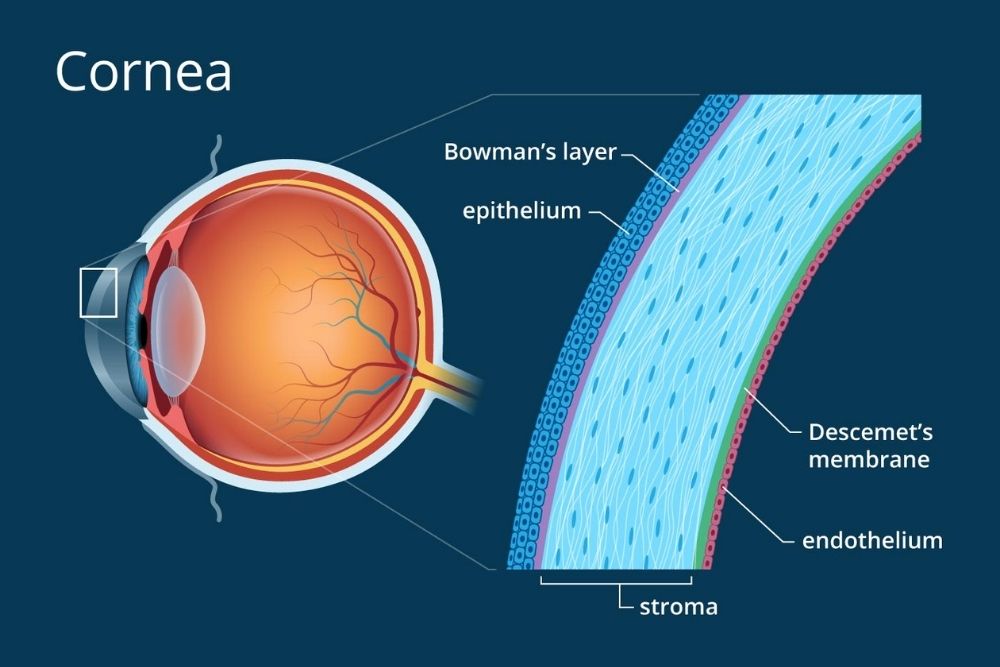The part of our eyes that allows the light to enter is the cornea. It is a clear part of the eye that appears wider than tall. It measures about 12 millimeters (mm) for the horizontal diameter of the cornea and 11 millimeters for the vertical diameter for the front view. If viewed behind, it has a uniform diameter of 11.7 mm that appears circular.
Five layers of cornea:
- Corneal epithelium acts as the outer layer of the cornea. It measures about 50 microns which makes it less than 10 percent of the thickness of the cornea.
- Bowman’s layer is the transition between the corneal epithelium and underlying stroma. It is made of a dense fibrous sheet of connective tissue.
- The middle layer of cornea is called corneal stroma. It measures approximately 500 microns thick that makes 90 percent of the thickness of the entire cornea.
- Descemet’s membrane is a layer that separates stroma from the endothelial layer of the cornea. It is very thin but it thickens throughout life.
- The innermost layer is called corneal endothelium. It is composed of a single layer of cells and measures about 5 microns. Endothelial mosaic refers to the regular arrangement of cells.
The Function of Cornea

Approximately 65 to 75 percent of the focusing power of the eye comes from the cornea which makes it an important part of the eye. The parts of the cornea have its specialized function:
- Corneal epithelium that keeps the eye moist and healthy.
- Bowman’s layer helps to avoid the occurrence of corneal scratches.
- Corneal endothelium maintains the fluid content in the cornea. If damage to this part has occurred, vision may be affected because of the swelling.

Corneal Conditions
- Arcus senilis is the most common change in the cornea as people grow old. It develops in the periphery of the cornea as a white ring.
- A corneal abrasion is a scratched cornea that can lead to a serious eye infection.
- Pterygium grows in the peripheral cornea that causes irritation and vision problems.
- Dry eyes can damage corneal epithelium that results in eye discomfort.
- A corneal ulcer is an abscess-like infection in the cornea.
- Corneal dystrophy or Fuch’s dystrophy affects the corneal endothelium that causes corneal swelling and foggy vision.
- Acanthamoeba keratitis is a corneal infection that results in pain and vision loss.
- Fungal keratitis is a dangerous corneal infection that is most common in contact lens wearers.
- Keratoconus is at thinning and deformation of the cornea. It can be corrected with scleral contact lenses or hybrid contacts.
- Corneal ectasia is similar to keratoconus and is a rare complication of LASIK.



